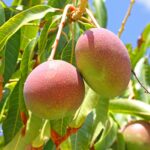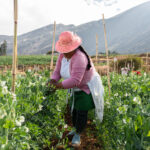Agronometrics in Charts: California set to achieve a record-breaking blueberry season

In this installment of the ‘Agronometrics In Charts’ series, Sarah Ilyas studies the state of California’s blueberry season. Each week the series looks at a different horticultural commodity, focusing on a specific origin or topic visualizing the market factors that are driving change.
According to the California Blueberry Commission, California's 2024 blueberry crop is estimated at 74.5 million pounds, with 53 million designated for the fresh market and 21 million for processors. This is an increase from last year’s 71 million pounds but down from an initial estimate of 80 million pounds. The adjustment was due to some rain damage during bud break that affected fruit set, explained Todd Sanders, the commission’s executive director.
State plantings are estimated at 8,900 acres, up from 8,750 acres last year. Don Bowden, senior vice president of blueberries and nuts for Stockton-based AC Foods, attributed the crop's success to mild temperatures in December and January, which helped produce plenty of blossoms. However, some cold and rainy days in early spring slowed fruit sizing and ripening.
This year’s crop not only represents a record for the state, but the fruit is of “amazing” quality, Sanders said. This quality should help California growers distinguish their product from the increasing volumes of fruit being shipped from Peru, Mexico, and Chile. These three countries account for 88% of the fresh blueberry imports that come into the United States, according to the U.S. Department of Agriculture (USDA).
Related articles: California Avocado Commission boosts production forecast by 20%
 Source: USDA Market News via Agronometrics.
Source: USDA Market News via Agronometrics.
(Agronometrics users can view this chart with live updates here)
 Source: USDA Market News via Agronometrics.
Source: USDA Market News via Agronometrics.
(Agronometrics users can view this chart with live updates here)
Mexico, in particular, has significantly increased its production, overlapping with California's harvest period and offering lower prices. This market saturation by both domestic and international producers has created price pressures for growers. The large crop size and challenging market conditions are causing concern among growers, highlighting the need for strategic marketing to manage the surplus.
 Source: USDA Market News via Agronometrics.
Source: USDA Market News via Agronometrics.
(Agronometrics users can view this chart with live updates here)
“The United States is the largest consumer of blueberries in the world, so everybody’s putting their blueberries into this market, which then saturates the market and depletes the price,” Sanders said.
The situation is further complicated by other blueberry-producing states—including Georgia, Florida, the Carolinas, Oregon, and Washington—also having larger crops this year.
In California, growers in the San Joaquin Valley, who produce the majority of the state's commercial blueberries, are expected to reach peak production next week, with the harvest continuing through June. Meanwhile, other regions in the state, such as the Central Coast, have been harvesting berries since last fall.
In our ‘In Charts’ series, we work to tell some of the stories that are moving the industry. Feel free to take a look at the other articles by clicking here.
All pricing for domestic US produce represents the spot market at Shipping Point (i.e. packing house/climate controlled warehouse, etc.). For imported fruit, the pricing data represents the spot market at Port of Entry.
You can keep track of the markets daily through Agronometrics, a data visualization tool built to help the industry make sense of the huge amounts of data that professionals need to access to make informed decisions. If you found the information and the charts from this article useful, feel free to visit us at www.agronometrics.com where you can easily access these same graphs, or explore the other 21 commodities we currently track.














































